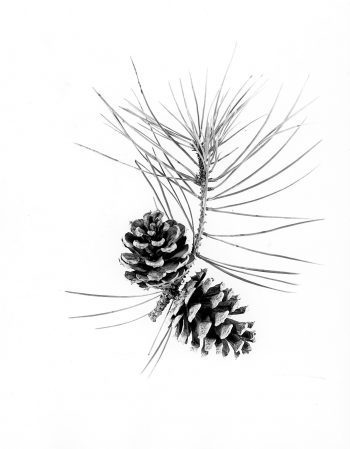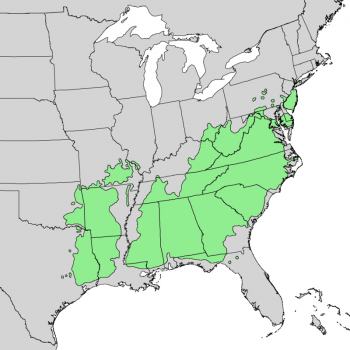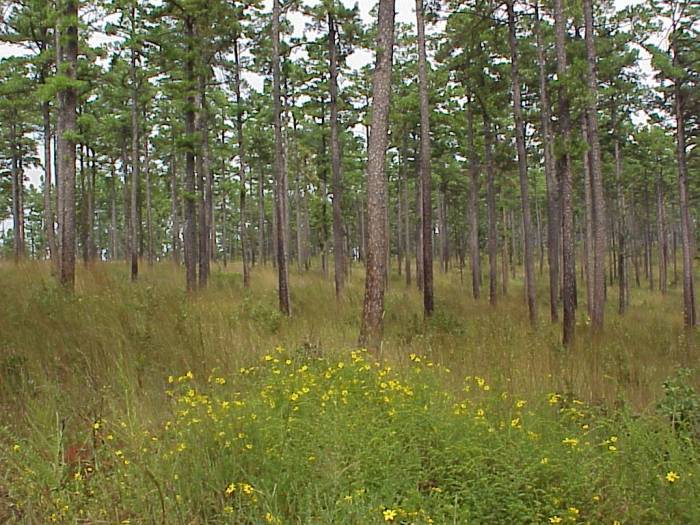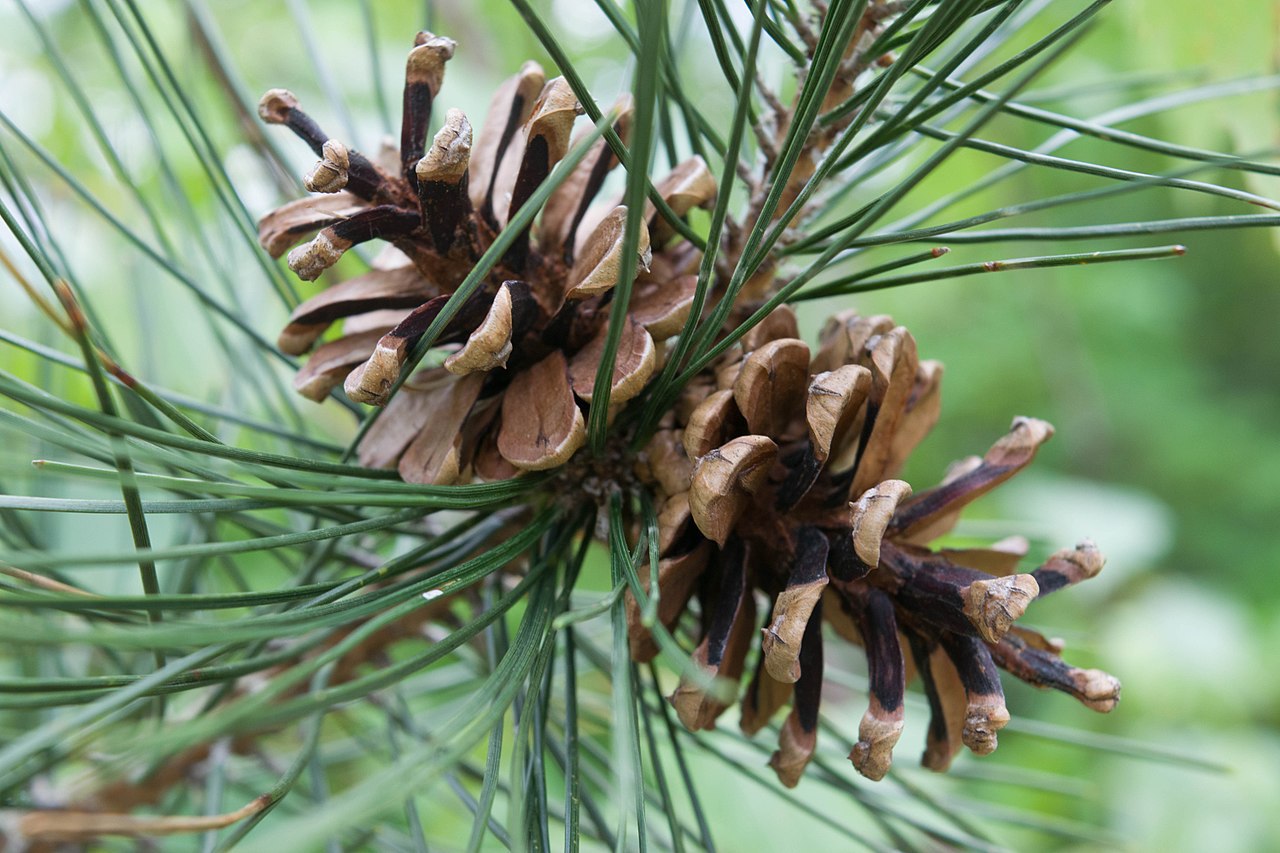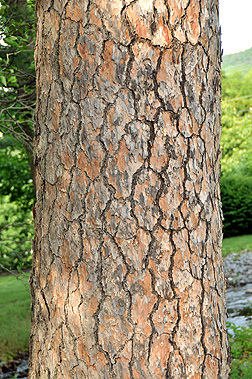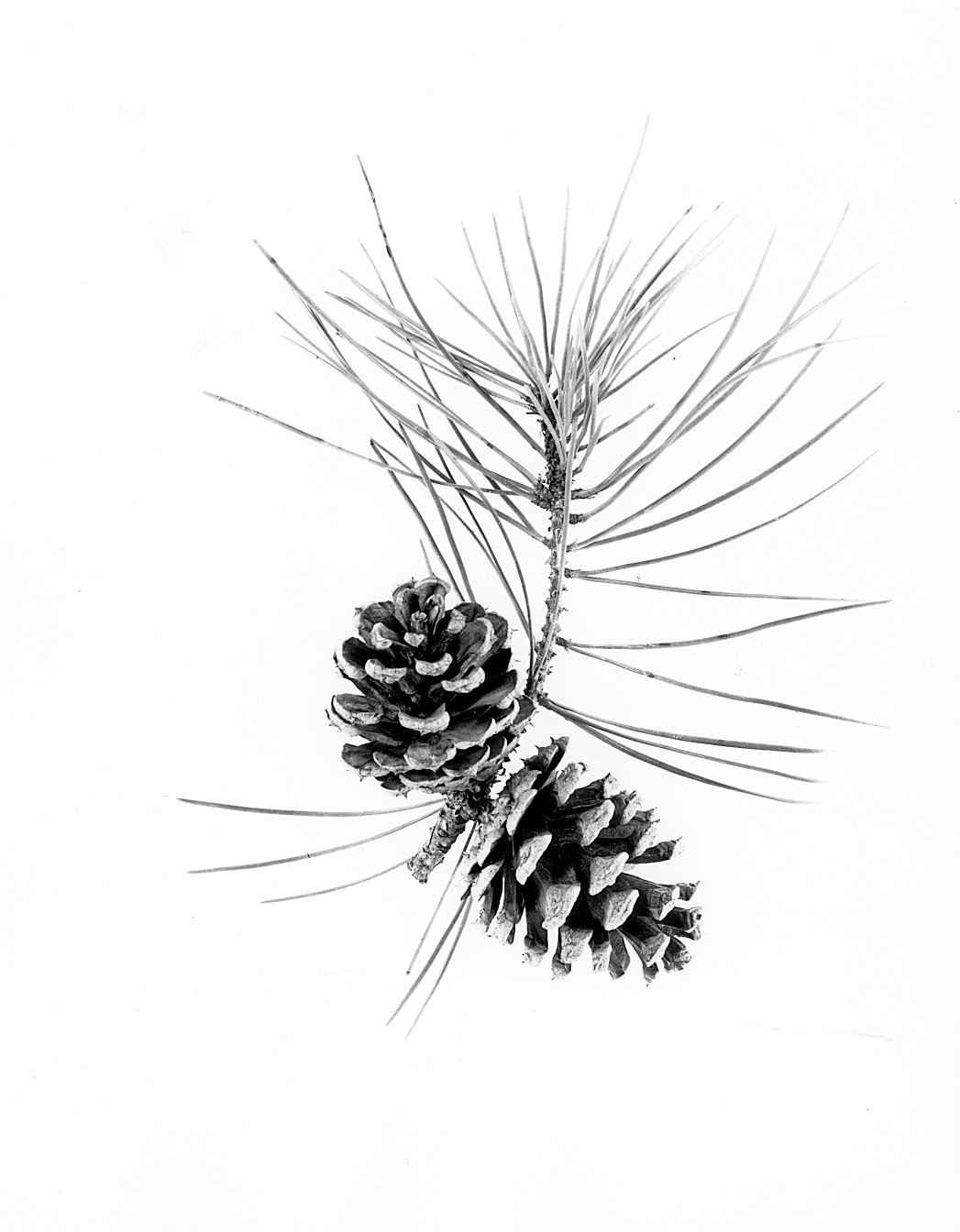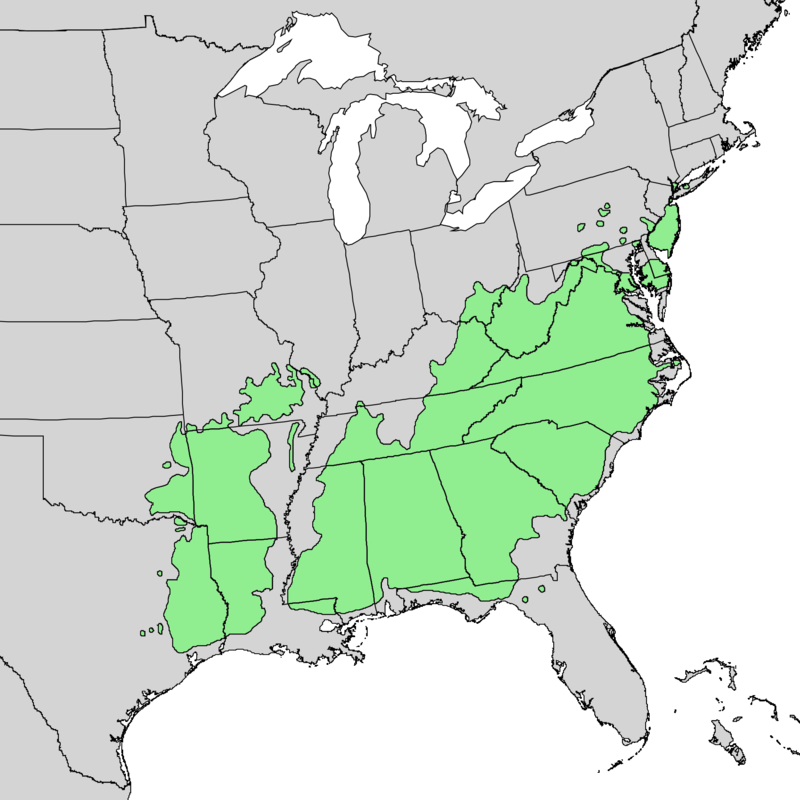subgenus Pinus, section Trifoliae (Duhamel), subsection Australes (Loudon).
Pinus echinata, first described in 1768 by Philip Miller (1691-1771), is commonly known as shortleaf pine, shortstraw pine, and southern yellow pine. The species named is derived from the Latin term, echinatus, meaning prickly, obviously describing the short, prickly foliage.
Ethnobotany. This pine is highly valued for timber and pulpwood.
Description. Shortleaf pine is an evergreen coniferous species of tree that grows to mature heights of 125 feet (40 m) with a straight trunk to 48 inches (1.2 m) in diameter, measured at breast height, and rounded to conic crown.
- Bark is red-brown in color, scaly-plated with evident resin pockets between the plates.
- Branches grow spreading and ascending; 2-year-old branchlets are slender, measuring 0.2 inch (5 mm) or less, greenish brown to red-brown colored, often glaucous, aging red-brown to gray, roughened and cracking below leafy portion.
- Foliar buds are ovoid to cylindric shaped, colored red-brown, resinous, and measure 0.2 to 0.28 to (0.5 - 0.7 cm) long.
- Leaves (needles) are borne in bundles of 2 (sometimes 3) per fascicle, growing spreading to ascending from their point of origin, and persist 3 to 5 years on the tree. Needles measure 2.8 to 4.4 inches (7 - 11 cm) long and circa 0.04 inch (1 mm) wide. They grow straight with a slight twist, colored gray- to yellow-green. All surfaces have fine stomatal lines, finely serrulate margins, and abruptly acute apices.
- Foliar sheaths measure 0.2 to 0.4 inch (0.5 - 1 cm), occasionally up to 0.6 inch (1.5 cm), with a persistent base.
- Pollen cones are cylindrical in shape, 0.6 to 0.8 inch (15 - 20 mm) long, colored yellow- to pale purple-green.
- Seed cones mature 2 years after pollination and are semipersistent, solitary or clustered, spreading, symmetric, lanceoloid or narrowly ovoid shaped before opening, ovoid-conic when open. They measure 1.6 to 2.4 inches (4 - 6 cm) long, colored red-brown when young, aging gray, nearly sessile or growing on peduncles to 0.4 inch (1 cm) long.
- Seed scales lack contrasting dark border on distal adaxial surfaces. Umbo are positioned central to the scale, with and elongated to short, stout, sharp prickle.
- Seeds are ellipsoid shaped with a 0.24 inch (6 mm) body. They are gray to nearly black with a 0.48 to 0.96 inch (12 - 16 mm) wing.
There are few similar species. The short needles and small cones (often presented in very large cone crops that are retained on the tree for several years) make this pine quite unmistakable.
Distribution. This species is native to USA - New York, Pennsylvania, Ohio, Illinois, Arkansas, Missouri, Kentucky, Tennessee, West Virginia, Maryland, Delaware, Virginia, North Carolina, South Carolina, Georgia, Florida, Alabama, Mississippi, Louisiana, Oklahoma and Texas. Typically found growing in uplands and relatively dry forests at elevations of 650 to 1900 feet (200 to 610 m) above sea level elevation; commonly in mixed stands with Pinus taeda.
Hardy to USDA Zone 6 - cold hardiness limit between -10° and 0°F (-23.2° and -17.8°C).
